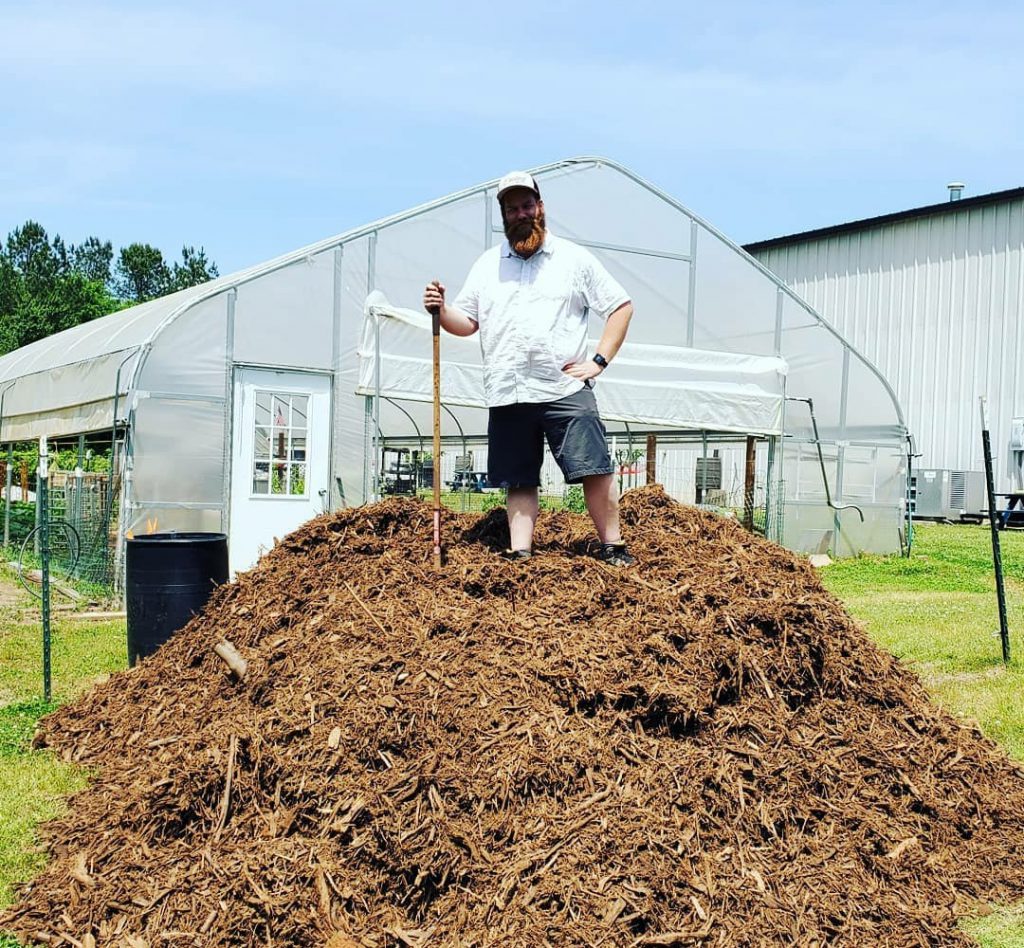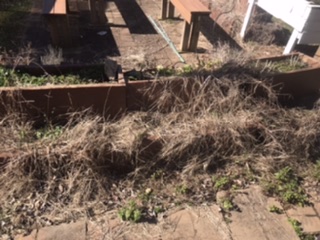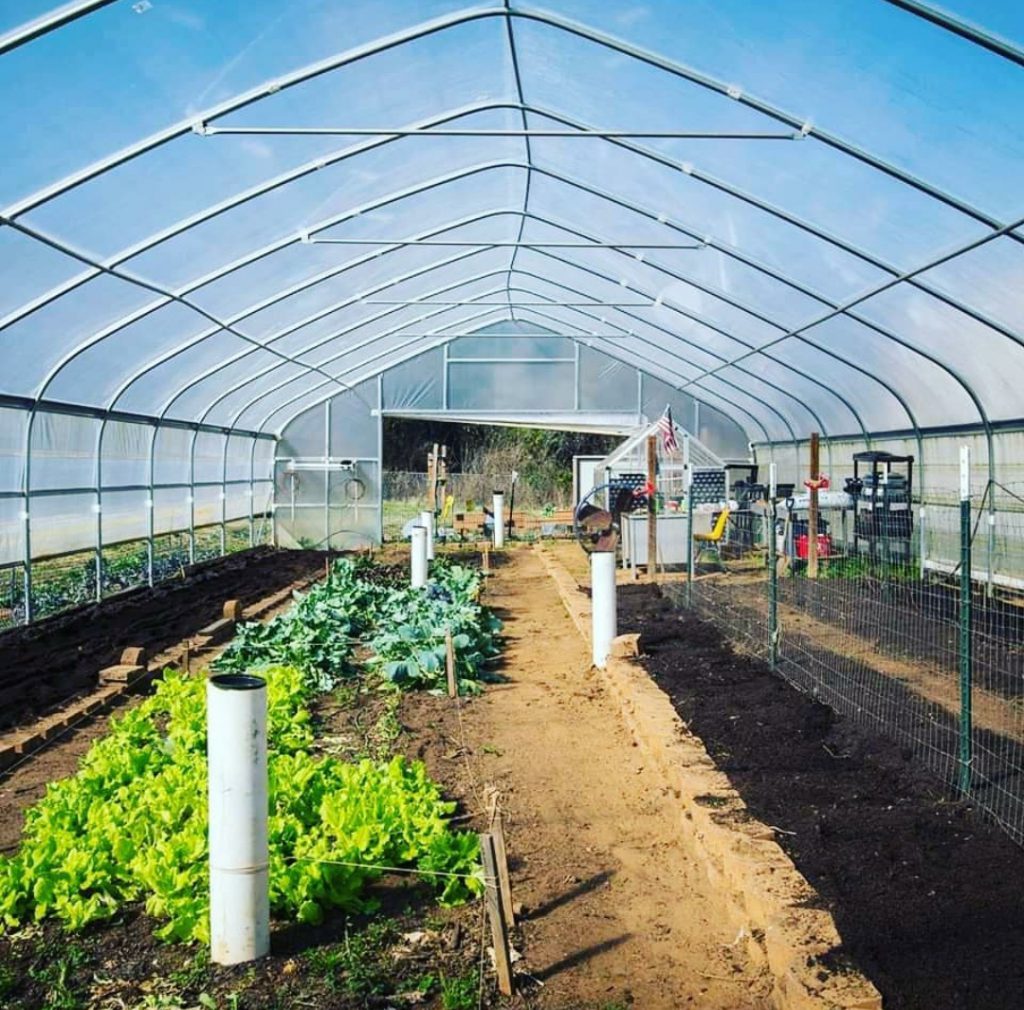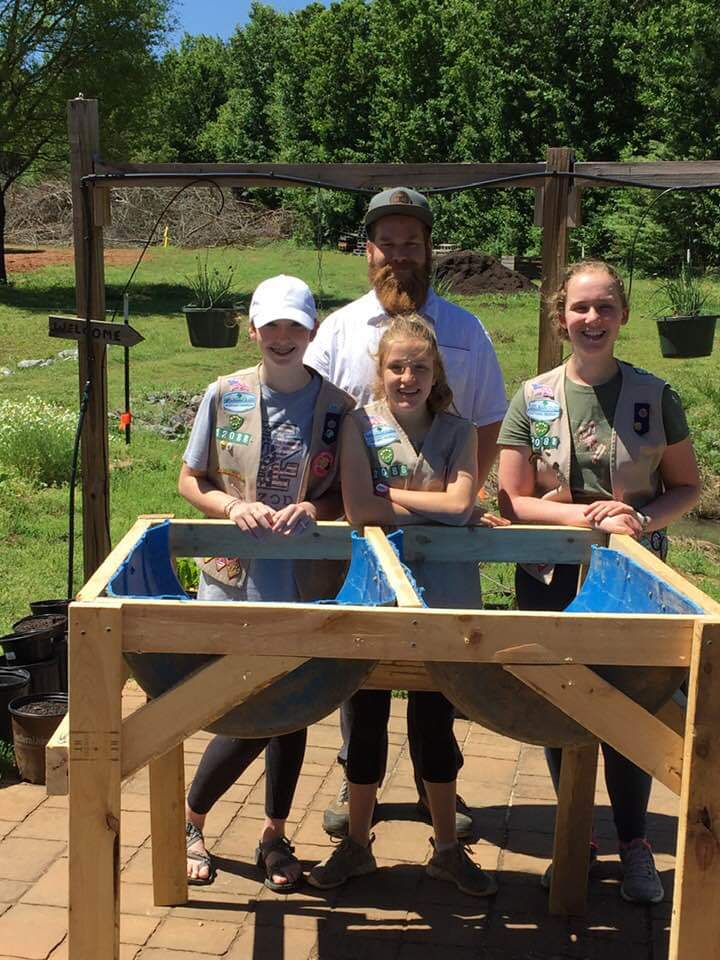
The capstone course of the sustainability certificate was by far the most demanding course. However, due to the attention that was needed to complete the capstone, I was able to learn and grow a lot as a sustainability advocate and as a student. I worked with two other students, Maggie Smith and Nicole Cruicshank, on this project.
My capstone project was titled Garden for All and was in partnership with the Northeast Georgia food bank. The Food Bank has more than 25 years of experience serving the community and currently distributes more than 11 million pounds of food to a fourteen county service area through more than 225 partner organizations every year. They work with partners located in the community to distribute food from the food bank itself to the individual households. The Food Bank works with local, regional, state, and national product partners to bring food into the community.

Located at the back of the food bank is a small community garden, which allows them to distribute fresh produce along with the donations and surplus food that they regularly have. This is an amazing opportunity to the food bank to not only provide fresh produce, but to also host classroom workshops and volunteer events for the community. However, the current garden situation is unable to accommodate community members who are wheelchair bound, special needs, or otherwise requiring specialized assistance. Many members of the community have expressed interest in volunteering at the garden, but are unable to due to their limitations. These limitations include being wheelchair or cane bound, bad backs, blindness and/or deafness. It is a shame that something that is meant to serve the community is unable to serve the entirety of the community.

The purpose of the Garden for All project is to ultimately turn the outdoor space behind the Northeast Georgia Food Bank into an accessible and inclusive community garden area and education space that keeps all aspects of sustainability in mind. We decided to accomplish this goal by creating three separate documents for the food bank to use in a multitude of ways and platforms. The documents include a site specific design for the food bank to utilize themselves, a distribution pamphlet to send to surrounding food banks and community gardens to start their journey of sustainable gardening, and a cost benefit analysis for the food bank to use for grant proposals after the project was completed.
The deliverable that I focused on was the site specific design. With my major being landscape architecture, I have had many classes that focus on redesigning a site, this was a perfect fit to best utilize my skills. Before I could actually start any design, I had a site visit with Isaac Swier, our project partner, so I could see the current built and natural conditions. He suggested that we do background research on a multitude of topics including community gardens, sustainable garden practice, and inclusivity. This gave us a strong foundation to continue on the project as a whole. Due to the pandemic conditions, we were unable to survey the community, however we did do background research specifically focusing on community needs. We found that the main improvement to the garden that would impact the community the most are fixing paving issues and raising the planter beds.

These two issues, paving and planters, were most important because Athens-Clarke county’s fastest growing age group is over-65, a group that would benefit from raised planters and having a more even terrain to navigate. Additionally, 40% of children in the county aged 5 to 17 live in poverty, so improving the education space, which has similar issues with pavers and old planter beds, would be very beneficial for the community garden. The suggestions made in the garden design are to use local, renewable, low-energy input materials to decrease environmental strain and support surrounding companies. Although there can be conflicts with accessibility due to ADA regulations, there are interlocking pervious pavers that would work well with careful wheelchair use. We also suggested that the food bank reserves non sustainable materials for areas where it is completely necessary or not needed. For example, under the covered tent does not have to be priority for pervious pavement as it is not as affected by rainfall. Concerning plant choice, we suggested using native plants where you can. Since they are already adjusted to the climate, they do not require as much water, maintenance, or pest control. Additionally, low-maintenance plants make it easier for people with disabilities to assist with gardening.

Through this capstone project, I gained many valuable experiences. First, I learned how to prioritize information. When doing the background research, there was so much information to filter through and decided on what is most important to share on the garden design poster and in the other deliverables on our project. In addition, I improved my skills with time management. There were many components and deadlines throughout this project and I had to work very hard on managing my time correctly in order to finish. Overall, I am thankful for this project and the connections and skills that it has afforded me. I am excited to see all the future changes for the community garden at the Food Bank of Northeast Georgia.
